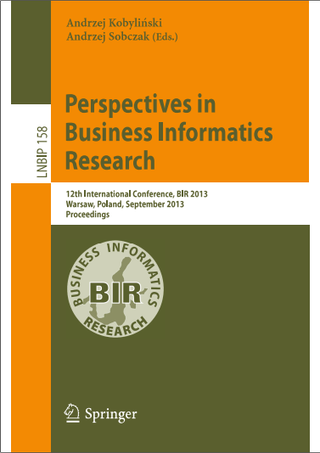?
Lecture Notes in Business Information Processing
This book constitutes a collection of selected contributions from the 12th International Conference on Perspectives in Business Informatics Research, BIR 2013, held in Warsaw, Poland, in September 2013. Overall, 54 submissions were rigorously reviewed by 41 members of the Program Committee representing 21 countries. As a result, 19 full and 5 short papers from 12 countries have been selected for publication in this volume. This book also includes the two keynotes by Witold Abramowicz and Bernhard Thalheim. The papers cover many aspects of business information research and have been organized in topical sections on: business process management; enterprise and knowledge architectures; organizations and information systems development; information systems and services; and applications.
